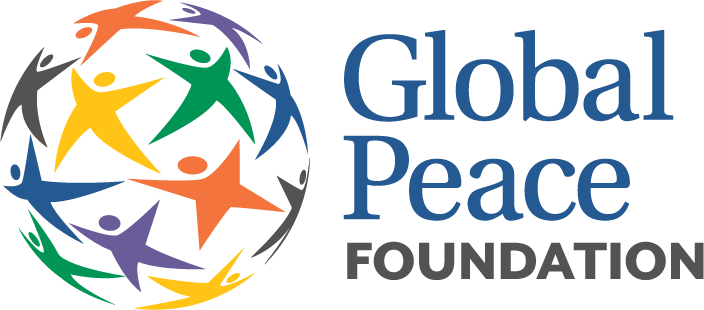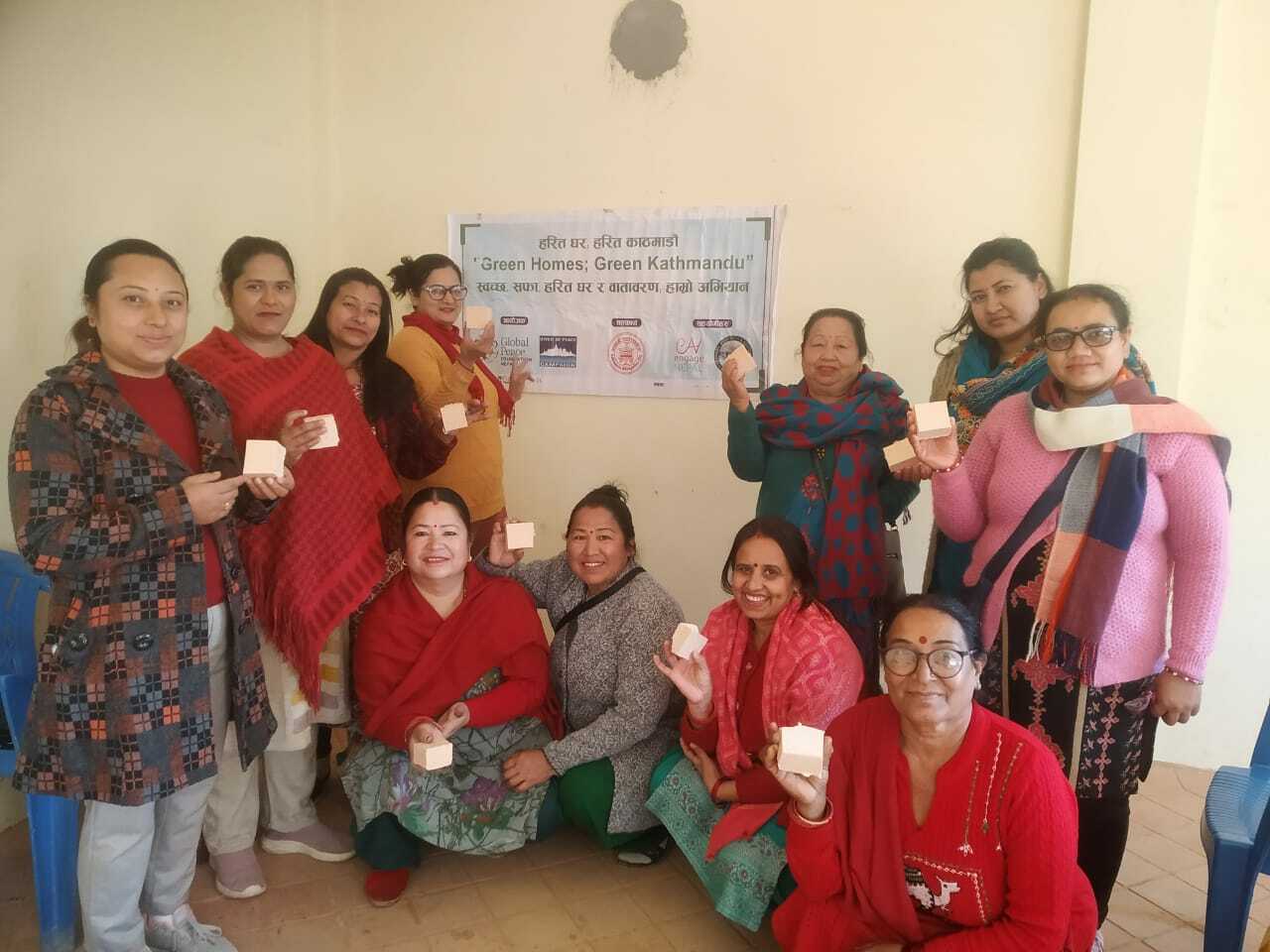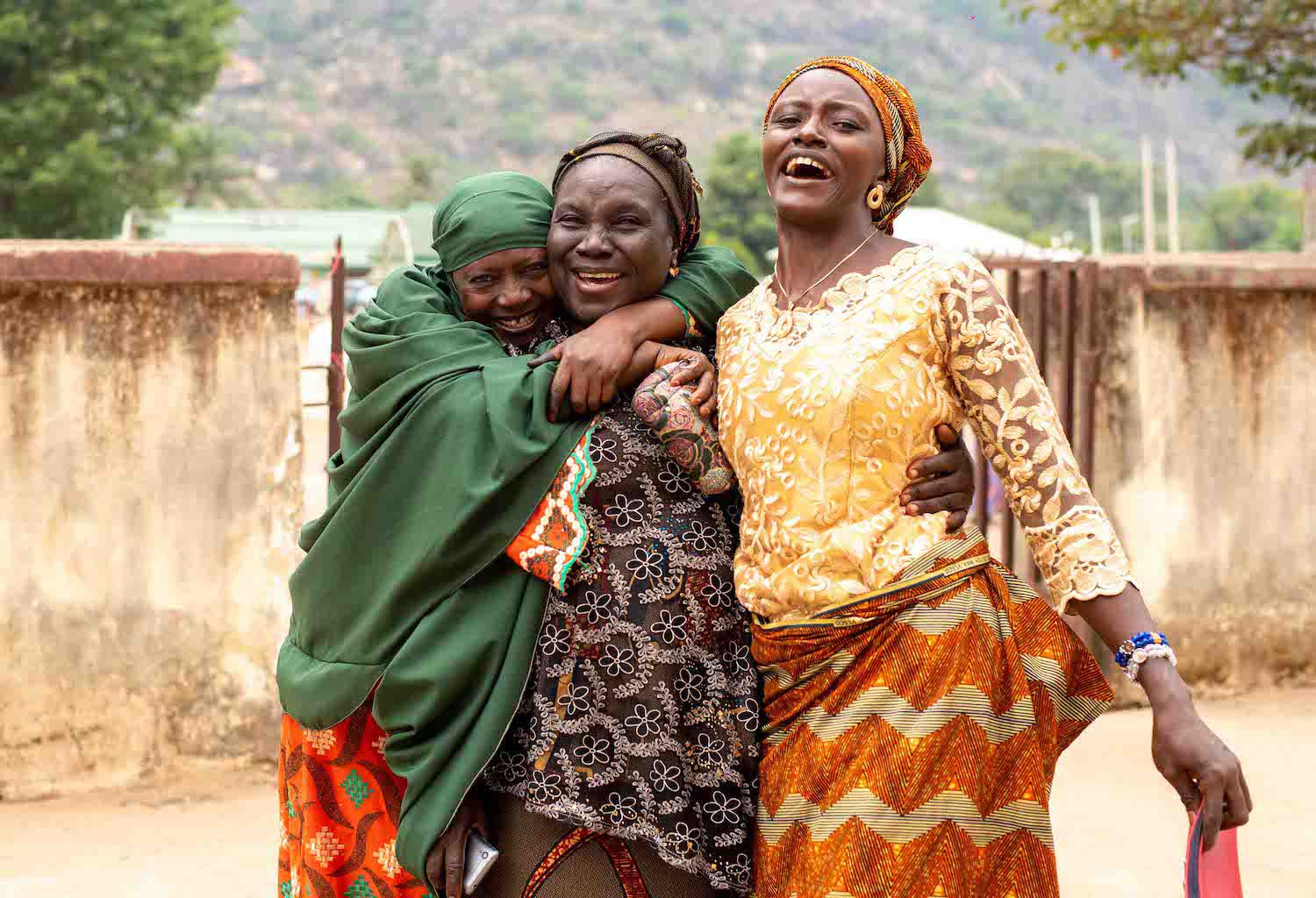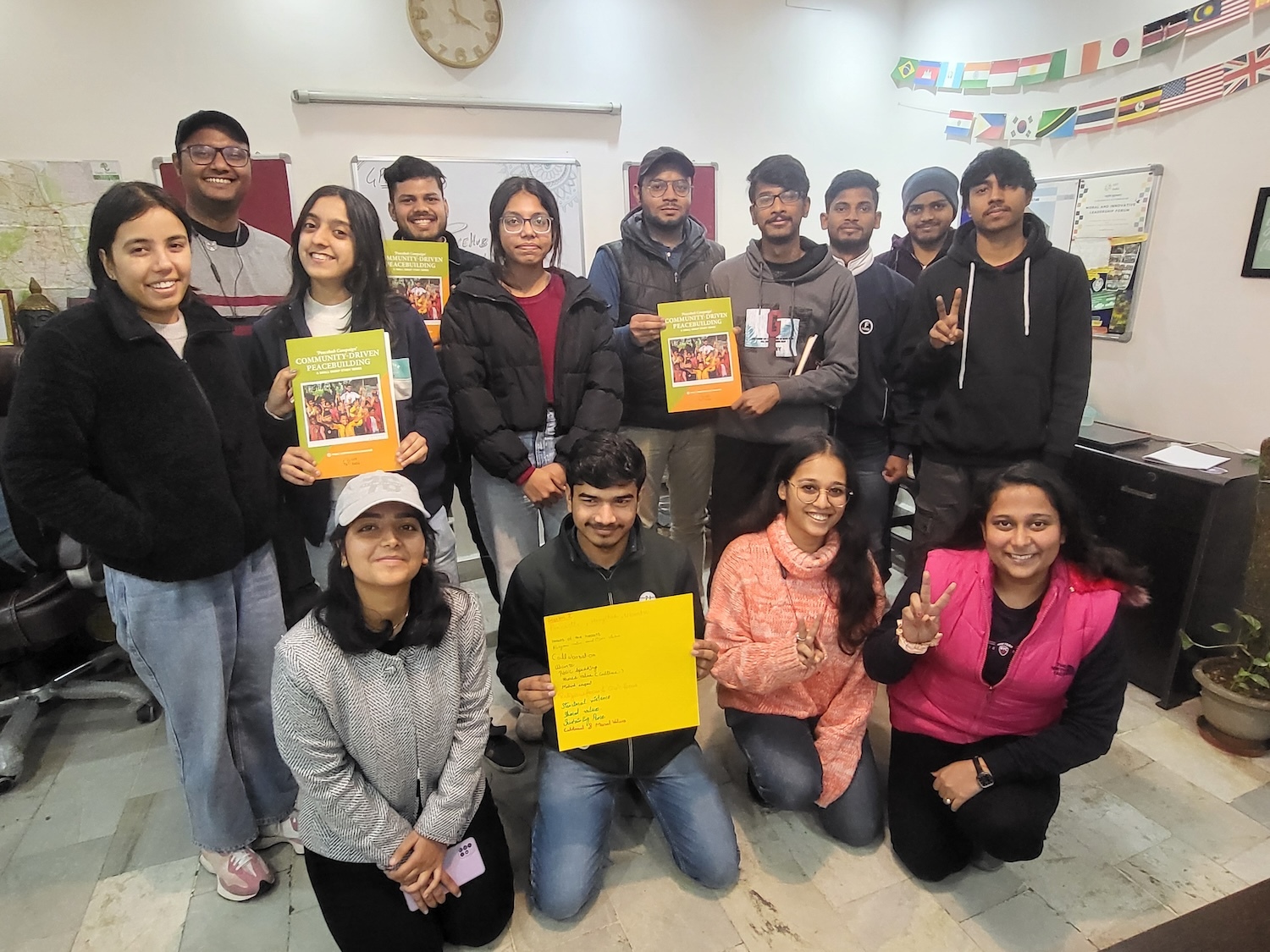New School at Epicenter of Violence Brings Children of Tribal Factions Together
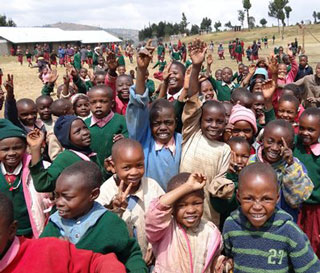
Children from Kikuyu, Kisii, and Kalenjin tribes at the new Global Peace Foundation-supported school in Molo.
The town of Molo is about three hours northwest of Nairobi in Kenya’s Rift Valley. After the contested presidential election in 2007, Molo was the epicenter of violence between the Kikuyu and Kalenjin tribes which backed the two presidential candidates, causing the deaths of about 1,600 people nationwide, many of whom were clubbed to death, hacked by machetes or locked in their homes and burned alive. In addition 600,000 were left homeless after their houses where burned to the ground or violence forced them to flee their villages. The original school, which was for children of just one tribe, was burnt to the ground during this time by members of the other tribe.
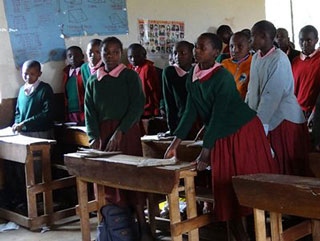
A Molo school classroom.
As soon as the conflict subsided the Global Peace Foundation, under Chairman Hyun Jin Moon’s leadership, started working in the Rift Valley, one of the first NGOs to do so, attempting to bring peace and reconciliation between the two warring tribes. GPF has been there ever since. During 2008, Chairman of GPF Kenya Dr. Manu Chandaria, a private citizen and well-known philanthropist, volunteered to fund the rebuilding of the school on the one condition that that the new school be for all tribes.
During my recent visit to the new school in Molo , the principal—or as he likes to be called, the head teacher—walked me to where the original school was. Grass had grown over the foundation of the old school, there was not even a scar left behind. Pointing out where his office once was, he told me, “The prior school is just an old memory; the new school has slowly healed the wounds in the hearts of the villagers.”
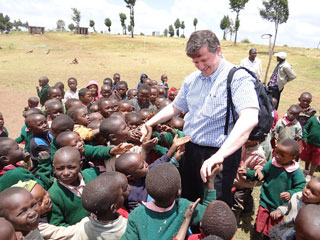
The author meets children outside the school.
A significant portion of the work in Kenya of GPF and the Global Peace Youth Corps (GPYC) is peace building, especially in advance of the presidential elections scheduled at the end of this year. There has been a lot of progress since the election of 2007, but there is still a tremendous amount of tension. GPF’s peace building outreach is focused on young people because most of the post-election violence was inflicted by the hands of youth, who were encouraged by corrupt politicians.
GPF now works on campuses and with community-based youth groups, sponsoring Peace Education Workshops, Sports for Peace and exchange programs between the different tribes.
When I visited GPF’s office in Molo, which was donated by the district commissioner of the Molo area, I met two young men that were heading the office. Each is a youth leader in their community but represents a different and opposing tribe. It was moving to hear their stories, the work they have done, and their commitment to build peace.
GPF has a strong network of youth leaders that are working for peace throughout Kenya. This year GPF will co-sponsor two large youth summits, one with a government ministry, Brand Kenya, and the other with the National Cohesion and Integration Commission, the peace building commission that was set up by the government shortly after the violence subsided.
I met with senior representatives in each of these organizations: both were impressed with GPF’s track record and both were excited to partner with GPF. More than a thousand young people from around the country are expected for the 2-3 day summits, which will seek to advance peace building, transcend tribalism, and underscore the importance of Kenya’s new constitution which limits presidential power.
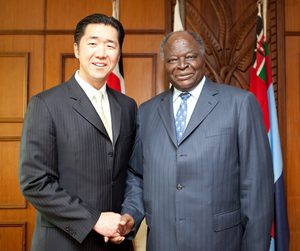
Global Peace Foundation Chairman Dr. Hyun Jin Moon meets Kenyan President Mwai Kibaki in 2010.
In addition to supporting youth, GPF is currently convening and coordinating meetings and seminars with a cross section of key faith leaders to help them understand their role in peace building and motivate them to take action.
GPF and GPYC have built a stellar reputation for peace building in Kenya. In addition to assisting GPF with building partnerships and securing funding sources, Kenyan President Mwai Kibaki has included GPF as one of two NGOs included on the National Steering Committee on Peace Building and Conflict Resolution. This committee of 30 organizations is headed by a representative of the President and includes two government ministries and a United Nations agency, and is charged to coordinate all Government, UN and NGO efforts to ensure a peaceful process for the next presidential election in December of this year.
Mike Sommer recently visted Kenya on a fact-finding tour for the Global Peace Foundation.
